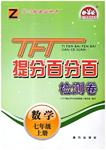��Ŀ����
����Ŀ�����������ǹ���ѧ��������μ�����Ϊ��Let��s Ride Bicycles����Ӣ���ݽ���������дһ���ݽ��壬��Ҫ���ݰ�����
1.Ŀǰ���������Ŀ�����Ⱦ�ͽ�ͨ���������⣻
2.�����г����洦���绷�����Խ�������ȡ�
ע��:1.������100����
2.�ݽ��忪ͷ�ͽ�β�Ѹ��������������ܴ�����
�ο��ʻ㣺��̼���low-carbon life ���ܣ�energy saving
Good morning, everyone,
I am Li Hua from Xingguang Middle School. I feel it an honor to communicate my idea to you. The topic of my speech is ��Let��s Ride Bicycles��.
______________________________________________________________________________________________________________________________________________________________________________________________________________________________________________________________________________________________________________________________________________________________________________________________________________________________________________________________
���𰸡�Good morning, everyone!
I am Li Hua from Xingguang Middle School. I feel it an honor to communicate my idea to you. The topic of my speech is ��Let��s Ride Bicycles��.
As is known to all, air pollution is getting more and more serious recently and as a result, many people are suffering from lung diseases. What��s more, the traffic condition is getting worse and worse day by day, on account of the popularity of cars. So, it is right time that we should lead a low-carbon life
We ought to ride bicycles, for not only can it save energy but also it reminds us to raise awareness of environmental protection.There is no denying that regular exercise and fresh air contribute to good health. Moreover, riding bicycles provides us with a perfect opportunity to strengthen our body and keep up high spirits
Every little step can make a difference to society. Let��s ride bicycles. I��m convinced that our world will become more beautiful.
��������
����һƪ�����д����
��1����������ʾ��֪�����������ǹ���ѧ��������μ�����Ϊ��Let��s Ride Bicycles����Ӣ���ݽ���������дһ���ݽ��壬��Ҫ���ݰ�����1.Ŀǰ���������Ŀ�����Ⱦ�ͽ�ͨ���������⣻2.�����г����洦���绷�����Խ�������ȡ�
��2��������д��Ҫ��ȷ���ؼ��ʣ��飩��low-carbon life (��̼����)��energy saving (����)��as a result (���)��on account of (����)��strengthen(��ǿ)�ȡ�
��3����������ʾ���ؼ��ʣ��飩����Dz����䣬ע����νһ�º�ʱ̬���⡣�˴�������ҪӦ��һ������ʱ��
��4����������ģ�ע��ʹ��ǡ�������ʽ��о���֮����ν�����ɣ���дһ��Ҫ�淶�����������������۵ľ����Ƿdz���Ҫ�ġ�

 ��ְٷְټ���ϵ�д�
��ְٷְټ���ϵ�д�